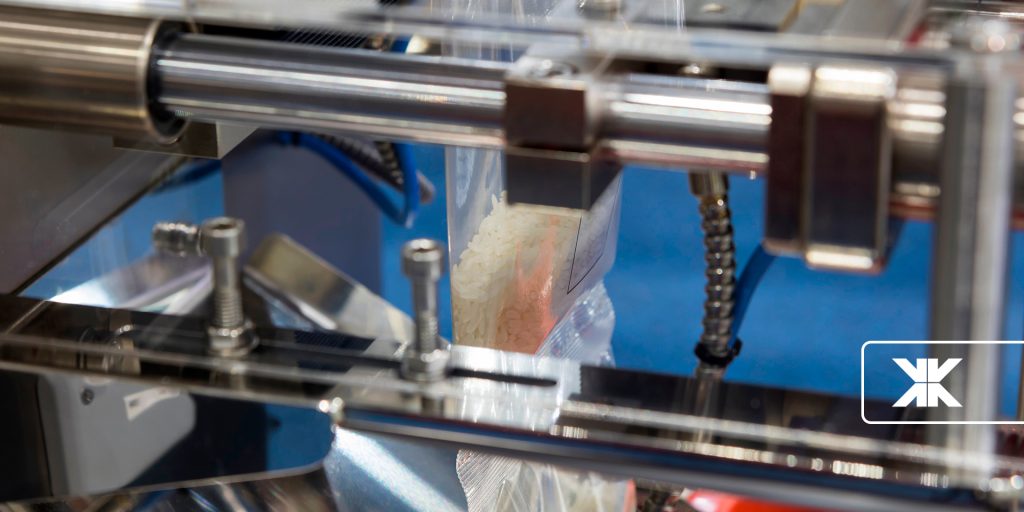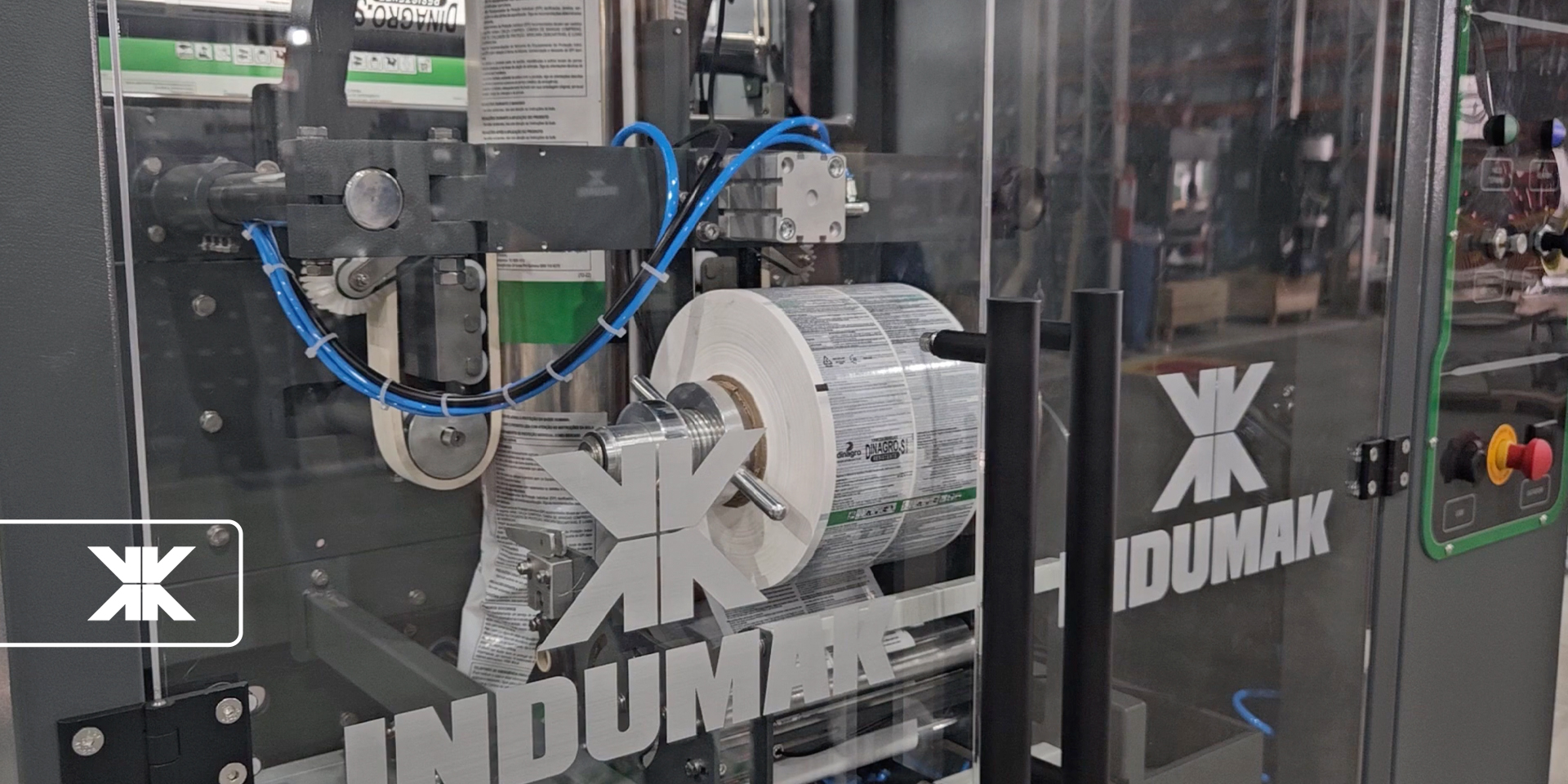
Categoria: Grouping, Innovation
10 PACKAGING TECHNOLOGIES FOR FOOD INDUSTRIES
Packaging for food industries is a crucial factor in ensuring the quality and preservation of products, using appropriate films and types of packaging, maintaining ideal temperatures and conditions, and correctly handling packaging.
The use of advanced packaging technologies allows the so-called “shelf life” or shelf life of products to be extended, keeping their sensory characteristics intact for longer.
Furthermore, good packaging minimizes the risk of contamination. In the food industry, this process follows strict standards from bodies such as Anvisa, aiming for consumer safety.
Read on to discover the best packaging technologies available.
10 technologies used for efficient packaging of food products
The market is quite strict when it comes to controlling the packaging of food industry products. Luckily, there are many technologies that can be applied to contribute and assist in the correct storage of these products. Shall we get to know some of them together?
01 – Smart packaging
Smart packaging represents a significant advance in storage, with applications of technologies such as freshness and expiration sensors, temperature and humidity monitoring, QR Codes and NFC technologies. Understand each of these applications:
Freshness and expiration sensors
These sensors are integrated into packaging to monitor and indicate the freshness and expiration date of food. They can detect gases emitted by decaying food, changes in chemical composition and other indicators of spoilage, ensuring consumers have access to fresh, safe produce.
Packaging with temperature and humidity monitoring
These packages are equipped with devices that constantly monitor internal temperature and humidity. This is crucial for products sensitive to environmental variations, such as frozen or fresh foods, helping to maintain quality and safety throughout the distribution chain.
Interactive packaging with QR Codes and NFC technology
These packages use QR Codes or Near Field Communication (NFC) to interact with smartphones and other devices.
Consumers can scan the QR Code or hold the device close to access detailed information about the product, such as origin, ingredients, instructions for use, nutritional data and expiration dates, as well as promotions and recipes. This improves transparency and consumer engagement.
02 – Modified atmosphere (MAP)
Modified atmosphere is the process of injecting harmless nitrogen gas or some mix of gases into the packaging, expelling the oxygen immediately before sealing the package, so that the products remain preserved for longer.
This practice allows the creation of an internal environment that is less conducive to the development of bacteria and fungi, helping to preserve the characteristics of the food for longer.
This process helps to reduce the use of chemical additives in products, maintaining their characteristics, such as crunchiness and freshness, for much longer.
03 – Vacuum packaging
Another example of a modified atmosphere is vacuum packaging, whose gases are completely removed from the packaging to avoid contact with oxygen, oxidation and proliferation of bacteria.
This is a very common method when packaging meat and fish, for example, which can easily spoil due to the proliferation of bacteria.
04 – Sustainable packaging technology
Single-use product packaging is one of the items that cause the most impact on the environment. Therefore, it is important that they are designed so that they can be recyclable, reusable or even biodegradable and compostable. In this sense, another technology that can help preserve goods concerns the use of sustainable packaging.
Widely used to package fruits, these packages offer less impact on changing the characteristics of the food, since, in this case, the product comes into contact with a more natural element and fewer chemicals are involved.
They not only help to avoid wasting spoiled food, by preventing premature spoilage, but they also reduce the impact of food consumption on the planet, by enabling a circular economy and closing cycles, with packaging being recycled, reused or absorbed by the environment.
05 – Induction sealing
Widely used in the beverage and liquid industry, and in the pharmaceutical industry, induction sealing is another process that helps preserve packaged products. This is because this method provides an airtight seal without there being contact between the machinery and the packaging.
Sealing is produced using an electromagnetic field that produces immediate high heat, melting the aluminum seal and sealing the product. Thus, the induction seal offers protection against contamination, leakage, drying out, oxidation and theft.
06 – Automation in packaging

Packaging automation is also another technology that contributes to better food packaging, as it creates a much more standardized process free from errors and human errors. This helps to avoid contamination, ensure the ideal dosage of products per package, detect the presence of metals inside the packages, among other benefits.
Furthermore, automation also guarantees greater productivity and cost reduction, allowing combined investment with other types of packaging technologies.
Read also: How to avoid bottlenecks in the food industry in the packaging process
07 – Active packaging
Active packaging is packaging that allows greater interaction with the stored product. Some examples of active packaging are those that release antioxidants to fight free radicals, antimicrobials to prevent the growth of bacteria and those that control humidity to keep food fresher and crispier.
This can occur through sachets and plastic films, films with temperature-sensitive permeability, among others.
08 – Coding and tracking of products
Tracking, which works through barcodes, QR Codes and RFID, is also another technology capable of guaranteeing quality information about products and promoting food safety, allowing greater control by companies and consumers, in addition to a quick recall, if necessary.
Currently, there is coding technology generating equipment capable of integrating into the production line in order to automate this process, making it just another step along the product packaging chain.
09 – Innovations in thermal packaging
There are also products that require much more specific packaging in terms of their temperatures. This is the case of frozen and ready-to-eat products, for example, whose packaging technologies involve better thermal insulation and resistance to extreme temperatures.
Packaging with EVA, polyethylene, aluminum and other materials is common for this type of food, but must take into account its density, humidity, among other factors.
10 – Indumak packaging equipment

In this content, we comment on some types of technologies that can help in the efficient packaging of your food products for their safe sale on the market and to the end consumer. But do you know the equipment that helps ensure packaging automation?
Indumak offers the food industry equipment that helps the product packaging and storage process from end to end.
These are state-of-the-art machinery for packaging, baling, bagging, boxing, palletizing and monitoring, which guarantee safety, agility and high productivity in your manufacturing processes.
One of our customers, for example, went from baling 275 bales/hour to 900 bales/hour with the MK-30 Indumak baler. A gain of more than 227% in productivity!
Future of packaging in the food industry
Future trends point to Smart Packaging, with increasingly intelligent packaging, which better preserves the quality and characteristics of food and drinks, and which guarantees, at the same time, greater traceability and a lower impact on the environment.
Sustainable packaging will always be on the sector’s radar, in the search for action that is more coherent with the needs of the planet. And technology will increasingly be an ally of food and beverage producing companies in this sense.
Also read: 7 trends for the food industry in 2024 that you need to know
It will always be necessary, however, to have in-depth knowledge of the suppliers of these technologies. Evaluate your experience, your solutions and your ability to serve efficiently, to ensure a correct choice of the most appropriate technology for your manufacturing process and, consequently, a final product with the quality desired by the consumer.
Do you want to know more about Indumak products that can bring more productivity and safety to your food industry, ensuring perfect packaging of your products? Talk to our experts and request a quote from our team.








